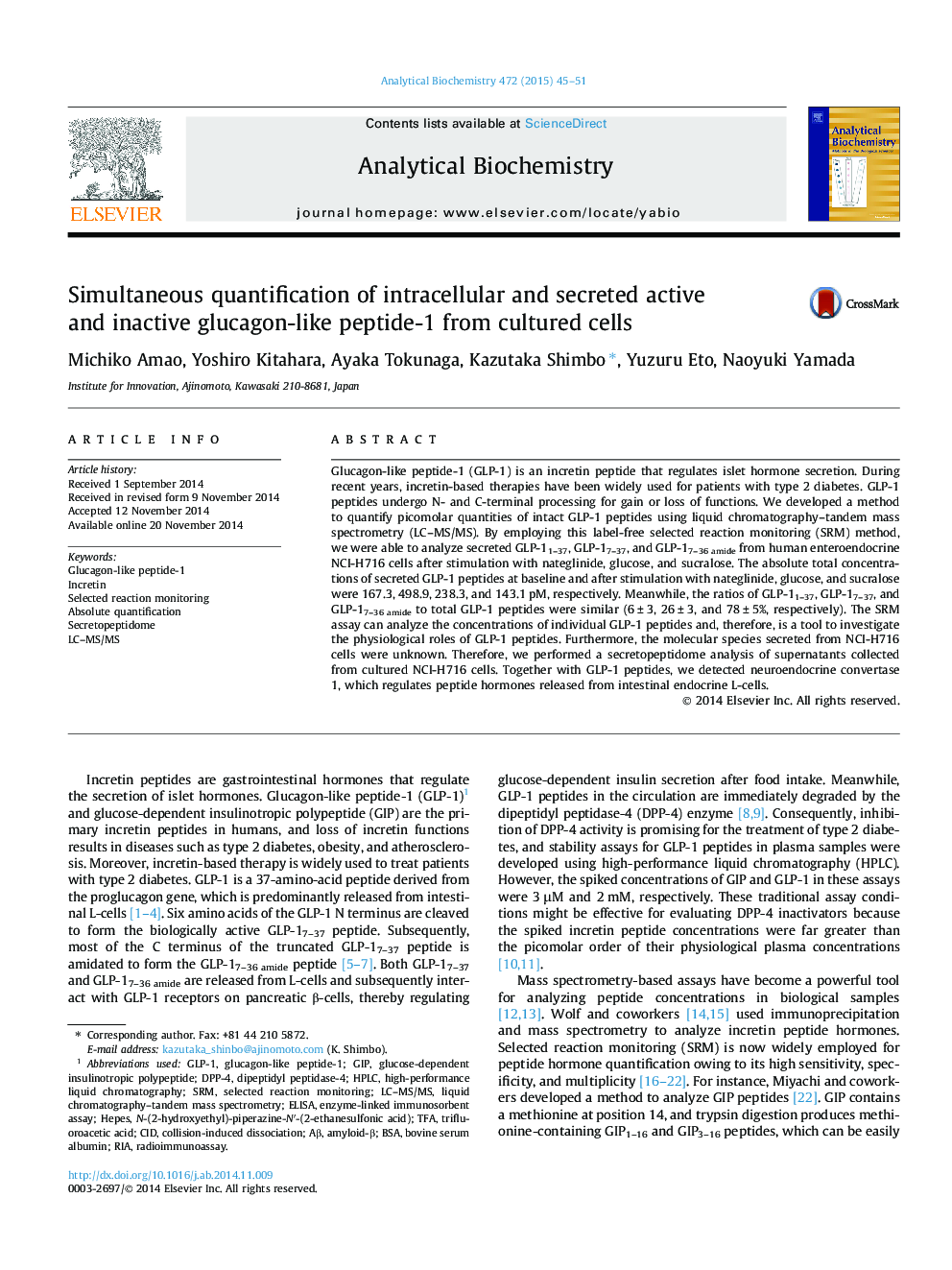| Article ID | Journal | Published Year | Pages | File Type |
|---|---|---|---|---|
| 7558499 | Analytical Biochemistry | 2015 | 7 Pages |
Abstract
Glucagon-like peptide-1 (GLP-1) is an incretin peptide that regulates islet hormone secretion. During recent years, incretin-based therapies have been widely used for patients with type 2 diabetes. GLP-1 peptides undergo N- and C-terminal processing for gain or loss of functions. We developed a method to quantify picomolar quantities of intact GLP-1 peptides using liquid chromatography-tandem mass spectrometry (LC-MS/MS). By employing this label-free selected reaction monitoring (SRM) method, we were able to analyze secreted GLP-11-37, GLP-17-37, and GLP-17-36 amide from human enteroendocrine NCI-H716 cells after stimulation with nateglinide, glucose, and sucralose. The absolute total concentrations of secreted GLP-1 peptides at baseline and after stimulation with nateglinide, glucose, and sucralose were 167.3, 498.9, 238.3, and 143.1 pM, respectively. Meanwhile, the ratios of GLP-11-37, GLP-17-37, and GLP-17-36 amide to total GLP-1 peptides were similar (6 ± 3, 26 ± 3, and 78 ± 5%, respectively). The SRM assay can analyze the concentrations of individual GLP-1 peptides and, therefore, is a tool to investigate the physiological roles of GLP-1 peptides. Furthermore, the molecular species secreted from NCI-H716 cells were unknown. Therefore, we performed a secretopeptidome analysis of supernatants collected from cultured NCI-H716 cells. Together with GLP-1 peptides, we detected neuroendocrine convertase 1, which regulates peptide hormones released from intestinal endocrine L-cells.
Related Topics
Physical Sciences and Engineering
Chemistry
Analytical Chemistry
Authors
Michiko Amao, Yoshiro Kitahara, Ayaka Tokunaga, Kazutaka Shimbo, Yuzuru Eto, Naoyuki Yamada,
